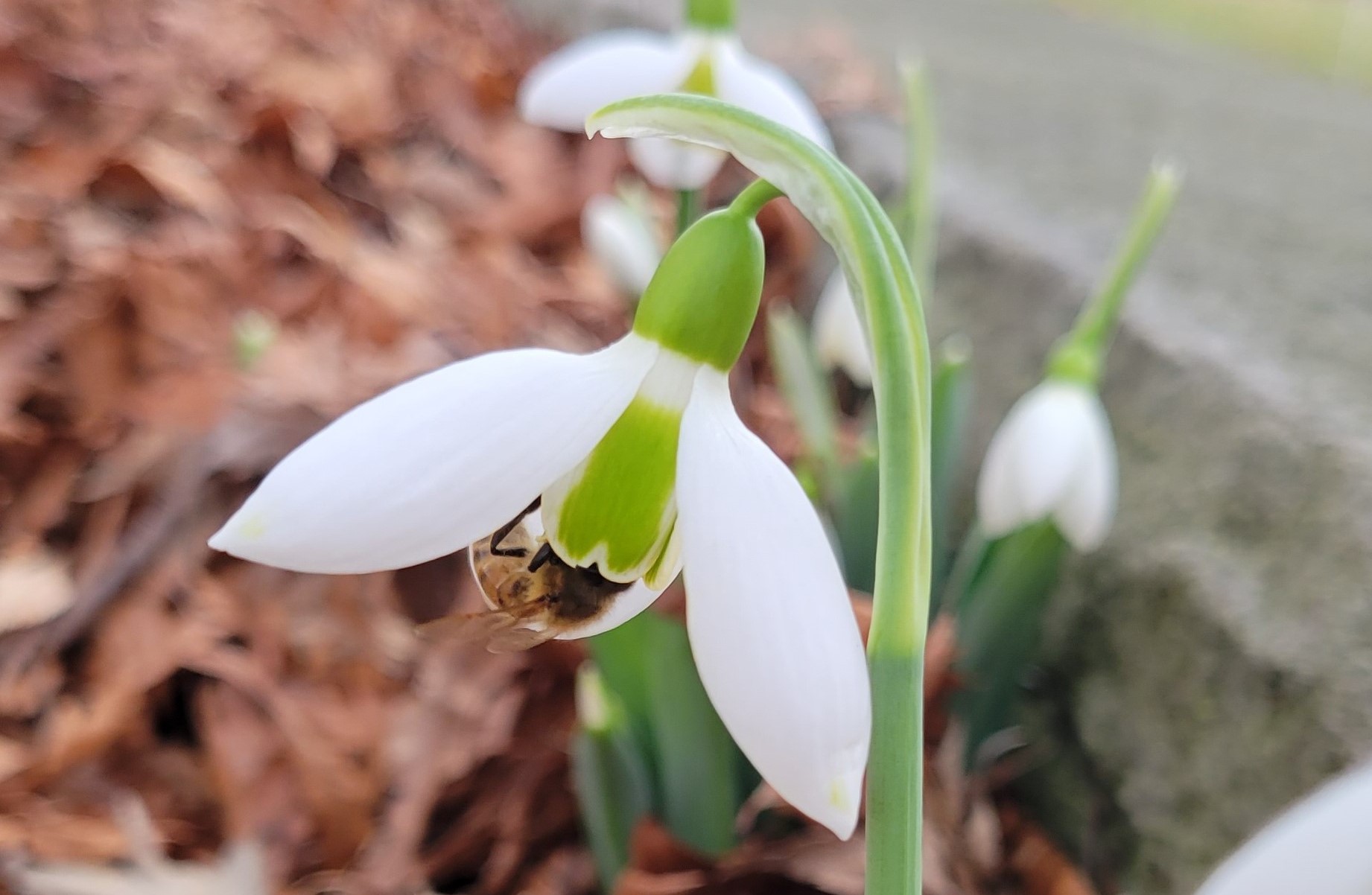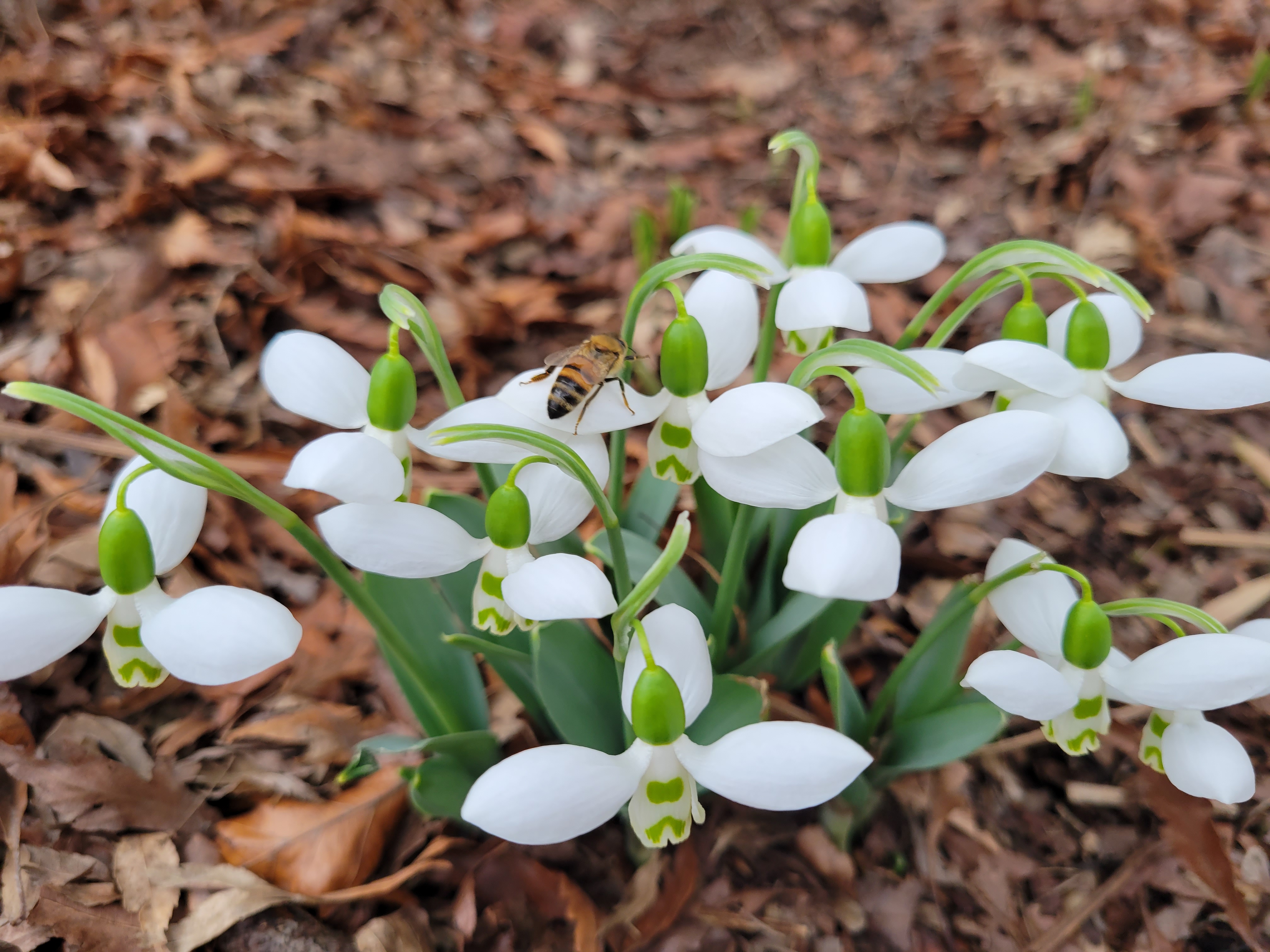Blog

#bioPGH Blog: Snowdrops – Where Winter Meets Spring
 A resource of Biophilia: Pittsburgh, #bioPGH is a weekly blog and social media series that aims to encourage both children and adults to reconnect with nature and enjoy what each of our distinctive seasons has to offer.
A resource of Biophilia: Pittsburgh, #bioPGH is a weekly blog and social media series that aims to encourage both children and adults to reconnect with nature and enjoy what each of our distinctive seasons has to offer.
Beloved Danish author Hans Christian Andersen once wrote a story about an eager little flower bulb in the middle of the cold winter who simply couldn’t contain itself when it felt a beckoning sunbeam. Upon blooming early, the little flower — despite the biting cold winter weather — found an unrealized strength to continue growing. That single flower went on to enchant a curious child, haunt a young man broken by unrequited love, and adorn a book of poetry. That flower, the star of Hans Christian Andersen’s story, was a snowdrop. True to the tale and their name, snowdrops bloom while the winter weather still chills the air — which means late February and early March in Western Pennsylvania. I first spotted snowdrops this year in Phipps’ Outdoor Garden on February 9, and just this week, I have seen them bashfully emerge in garden beds across my neighborhood. With another week or so, I am sure we will see even more dashes of their splendor in our Pittsburgh landscapes. Let’s explore these winter beauties!
Snowdrops grow readily in the damp soils of wooded areas, and considering they are often the first flowers to bloom, it’s no wonder they can make a forest feel enchanted like a fairy tale. And biologically speaking, snowdrops are indeed quite a wonder! Though only 6 – 9 inches tall, snowdrops (most common in North America are Galanthus nivalis) are able to withstand below-freezing temperatures, an uncommon trait in most flowers. They can do this because of specialized “anti-freeze” proteins that they produce to avoid the formation of dangerous ice crystals within their tissues. Snowdrops also store different kinds of sugars and starches at different times of year to ensure they have enough energy to bloom in February or March.
Now granted, we may see snowdrops across the North America, especially in the forested areas of the Northeast and Pacific Northwest, but snowdrops are not native to the continent. They originated in Eurasia, specifically the eastern shores of the Mediterranean Sea and land surrounding the Black Sea and Caspian Sea. Popularized by their delicate beauty and early bloom times, snowdrops made their way across Europe as early as the sixteenth century, if not before, and European settlers brought them to North America as an ornamental.

An early bee finds a reward with a snowdrop, February 9 in Phipps; Outdoor Garden.
As we watch for snowdrops on our walks in the woods and around cultivated areas, we have to remember that temperature influences flowering times, and temperatures have been trending warmer over the past several years. We’ve also some weather records broken – last week, Pittsburgh set a new high record of 72°F for February 15, and a few years ago, Western Pennsylvania set a record high temperature with 78°F on February 20. For comparison, the average high for the month is supposed to be around 39°F while the average low is 23°F. (As I post this, Pittsburgh is within reach of breaking another high temperature record today.) While overall changes in flowering time may appear minor, as our climate changes, there is no doubt that global flowering times are changing as well. If Pennsylvania winters continue to warm, we can expect to see earlier bloom times for some of our flower species, but this is just a small part of a multitude of changes among other species and ecological patterns. Remember, though, you have the power to make easy changes that have a big impact on climate change!
Hopefully you have a chance to go exploring outdoors sometime in the next few weeks. If you do, keep your eyes open in wooded areas for a little flower the color of snow — you just might spy a snowdrop!
Connecting to the Outdoors Tip: If you’re headed on a hike or a walk soon, check out iNaturalist to see where snowdrops have bloomed before. They are a bulb flower, like tulips or daffodils, so you can expect to see them in the same place year after year.
Continue the Conversation: Share your nature discoveries with our community by posting to Twitter and Instagram with hashtag #bioPGH, and R.S.V.P. to attend our next Biophilia: Pittsburgh meeting.

From the Outdoor Garden on February 9
Image credits: Header, Pexels public domain, all others Maria Wheeler-Dubas

